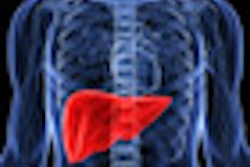Radiology reports that are tailored specifically to the clinical needs of the recipient will save radiologists time and probably will be valued and appreciated more by ordering physicians. This blunt message was delivered by a Belgian expert at RSNA 2012.
The Chicago presentation was the final segment of an investigation undertaken by Dr. Jan Bosmans and colleagues from the radiology department at Antwerp University Hospital. They invited a total of 3,884 clinicians and 292 radiologists to participate via email in two Internet surveys, one called "Clinicians' Opinions, Views, and Expectations Concerning the Radiology Report (COVER)," and the other "Radiologists' Opinions, Views, and Expectations Concerning the Radiology Report (ROVER)."
"The radiological community needs to develop innovative strategies that can reduce the burden of reporting. Increasingly, countries are reporting a lack of radiologists. Radiologists need to find ways, such as tailoring a report to only provide the precise information needed, to improve and apply advanced radiology knowledge and skills," Bosmans said.
Findings of the COVER survey were previously published in Radiology (April 2011, Vol. 259:1, pp. 184-195) and the ROVER survey in Insights into Imaging (June 2012, Vol. 3:3, pp. 295-302). But neither article included an analysis of the value of a radiology report from the perspectives of different types of physicians.
The COVER Internet survey was sent to 2,561 clinical specialists working at six hospitals in the Flanders region of Belgium and in the Netherlands, and an additional 1,323 general practitioners with practices in Antwerp, Belgium. The researchers received 444 responses, for an 11.4% response rate.
The majority of responses were from general practitioners (63.5%), followed by general internists and internal medical specialists (30.8%). Orthopedic surgeons represented about 6%.
The value of a radiology report differs greatly among medical specialties. Almost all general practitioners (97%) and internal medicine specialists (91%) agreed with the statement that a radiology report was indispensible. However, only 40% of orthopedic surgeons agreed, and more than one-third (36%) disagreed with the statement.
More than half of the orthopedic surgeons (54%) said that they were better able to interpret an imaging study than radiologists, whereas only one general practitioner made that statement. The internal medicine specialists were mixed, with 21% feeling that they were better than radiologists in interpreting imaging in their specialty and 46% did not feel that way at all.
The orthopedic surgeons also did not feel that radiologists could identify issues that they would not see, with only 16% concurring with the statement that "a radiology report often mentions important issues that I would not have noticed myself on the images." And 52% completely disagreed with the statement.
Internal medicine specialists also were skeptical, with only 49% agreeing and 15% disagreeing. General practitioners relied upon the radiologists' knowledge, with 84% agreeing with the statement and only 3% disagreeing.
With this feedback, it does not seem surprising that almost half of the orthopedic surgeons (48%) stated that they seldom read a radiology report. By comparison, 99% of general practitioners and 94% of internal medical specialists did read the majority of reports they received.
"Our findings are in accordance with most radiologists' everyday experiences," Bosmans said. "We believe that radiologists should tailor their reports to the requirements of the referring clinicians who ordered the exams. General practitioners will probably value more detail and recommendations, and reports to specialists should be tailored to meet the needs of the specialty."
In many countries, radiologists and residents spend a considerable amount of time reporting additional information, such as follow-up chest radiographs. This information may not be desired or needed by its intended recipient, he explained.
By differentiating how a report should be prepared based on the specialty requirements of the ordering physician, productivity can actually increase for radiologists by eliminating items in a conventional dictation that have little added value to the recipient.



















